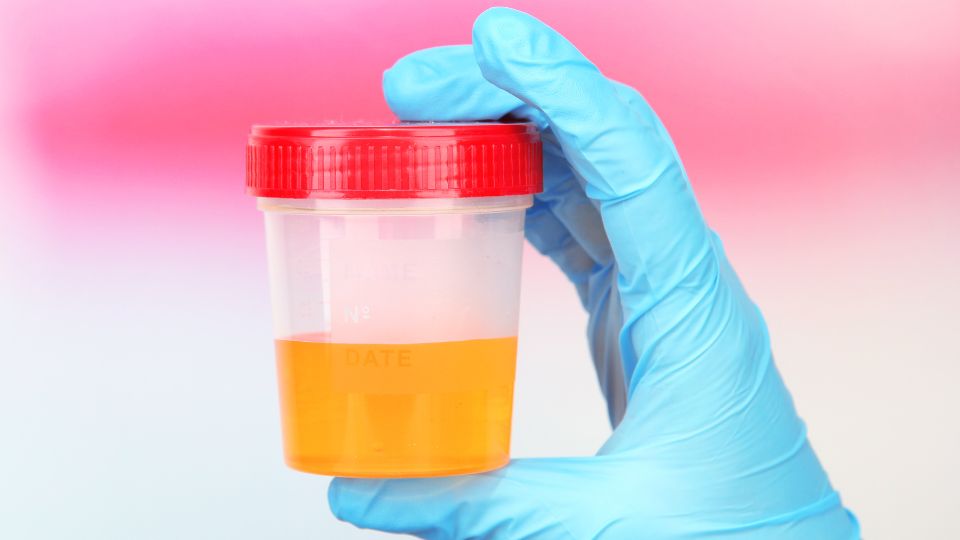Urine Color Changes During Pregnancy
Pregnancy brings about many changes in the body, and one such change can be the color of your urine. While this might be alarming at first, it’s often a normal part of the pregnancy experience. Understanding what different urine colors can indicate, as well as when to seek medical advice, can help ease any concerns.
Meaning of Different Urine Colors During Pregnancy.
Here’s a list of urine colors during pregnancy, their possible meanings, and reasons:
-
Clear or Pale Yellow
- Meaning: Well-hydrated, healthy urine.
- Reason: Adequate water intake.
-
Dark Yellow
- Meaning: Mild dehydration.
- Reason: Not drinking enough fluids or recent strenuous activity.
-
Bright Yellow
- Meaning: Harmless, often due to supplements.
- Reason: Excessive B-vitamins from prenatal vitamins.
-
Orange
- Meaning: Dehydration or a potential liver issue.
- Reason: Lack of fluids, consumption of certain medications or foods, or liver-related concerns.
-
Cloudy or Milky
- Meaning: Possible infection or increased protein.
- Reason: Urinary tract infection (UTI) or hormonal changes during pregnancy.
-
Pink or Red
- Meaning: Blood in the urine (hematuria).
- Reason: Possible UTI, kidney stones, or certain foods (like beets); should be checked by a doctor.
-
Brown
- Meaning: Severe dehydration or liver condition.
- Reason: Lack of fluids or a sign of liver dysfunction, like cholestasis.
-
Blue or Green
- Meaning: Unusual but can occur due to medications or food dyes.
- Reason: Certain medications, foods, or dyes used in diagnostic tests.
-
Hydration Levels: One of the most common reasons for changes in urine color is hydration. Clear to light yellow urine typically indicates proper hydration, while darker urine can be a sign of dehydration.
-
Prenatal Vitamins and Supplements: Many prenatal vitamins contain B vitamins and other nutrients that can cause urine to turn bright yellow or even orange. This is generally harmless and a common side effect.
-
Dietary Influences: Certain foods can change urine color. For example, beets can cause a reddish tint, while asparagus might give urine a greenish hue.
-
Hormonal Changes: Pregnancy hormones can affect kidney function and urine concentration, sometimes leading to changes in color.
-
Urinary Tract Infections (UTIs): UTIs are common during pregnancy and can cause cloudy, dark, or even reddish urine, often accompanied by a strong odor or discomfort during urination.
-
Increased Blood Volume: Pregnancy increases blood volume by up to 50%, which can sometimes cause changes in urine color as the kidneys work harder to filter this extra blood.
How to Solve It at Home
-
Stay Hydrated: Drinking plenty of water is crucial during pregnancy. Aim for at least 8-10 glasses of water a day to maintain a healthy urine color and support overall well-being.
-
Monitor Your Diet: If you notice unusual urine colors, consider your recent dietary intake. Foods like beets, carrots, or certain berries might be the culprit.
-
Check Your Supplements: If you’re taking prenatal vitamins or other supplements, be aware that they can change your urine color. Ensure you’re taking the correct dosage as prescribed by your healthcare provider.
-
Practice Good Hygiene: UTIs can often be prevented by practicing good hygiene, such as wiping from front to back after using the bathroom and urinating after sexual intercourse.
When to Consult a Doctor
While most urine color changes are harmless, there are some instances where you should seek medical advice:
-
Dark Yellow or Amber Urine: Persistent dark urine might indicate dehydration or a more serious issue like liver problems. If drinking more water doesn’t help, consult your doctor.
-
Cloudy or Foul-Smelling Urine: These could be signs of a UTI or other infection. It’s important to seek medical attention to prevent complications.
-
Red or Brown Urine: This could indicate the presence of blood, which may be due to a UTI, kidney stones, or other medical conditions that need immediate attention.
-
Green or Blue Urine: Although rare, certain medications or foods can cause green or blue urine. If you haven’t consumed anything that could cause this and the color persists, consult your healthcare provider.
-
Frequent Urination with Color Change: If you’re urinating frequently and notice a change in urine color along with pain or discomfort, it could be a sign of a UTI or another condition that needs medical evaluation.
Keep in Mind
-
Normal Variations: Urine color can vary throughout the day depending on your fluid intake, diet, and activity level. Occasional changes are usually not a cause for concern.
-
Be Aware of Other Symptoms: If changes in urine color are accompanied by symptoms like pain, fever, or swelling, it’s important to seek medical advice.
-
Routine Check-Ups: Regular prenatal check-ups often include urine tests to monitor your health and detect any potential issues early on.
Conclusion
Changes in urine color during pregnancy are common and usually linked to hydration, diet, or supplements. While most changes are harmless, it’s essential to be aware of what different colors might signify and when to consult a healthcare provider. By staying informed and maintaining good hydration and hygiene practices, you can manage these changes confidently and ensure a healthy






